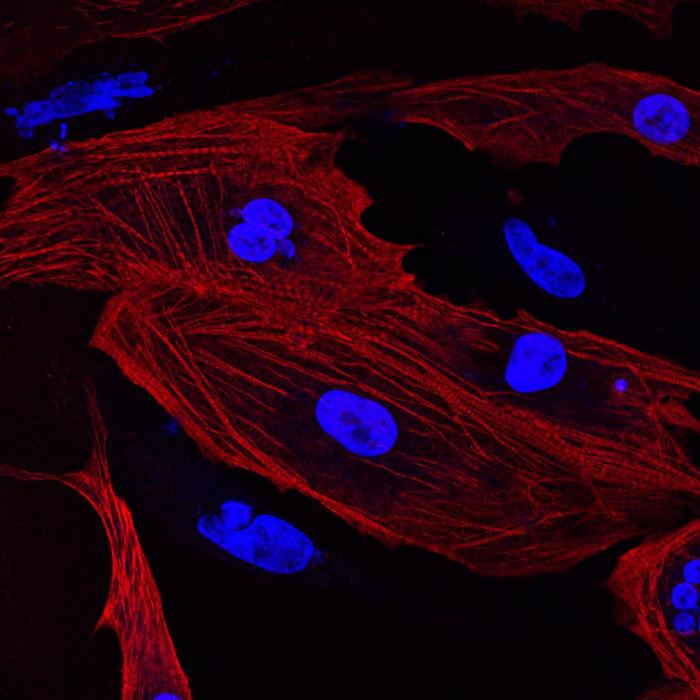How to Fix a Broken Heart: Healing Injured Hearts by Regeneration
Heart failure is one of the leading causes of death worldwide, and many believe that injury to the heart is irreversible. This is partially true since data shows that unlike skin or bone, heart muscle cells (cardiomyocytes) are known to regenerate only up to 1% in a healthy human heart. This amount is not nearly large enough to provide the level of regeneration required to heal an injured heart. Due to this low regeneration ability, the cardiovascular field has deemed adult human heart regeneration as impossible. Recent research by Dr. Michaela Patterson, however, convinces us that this might not be the case.
In her lab, Dr. Patterson observed that animals like zebrafish and newborn mice have the ability to regenerate cardiomyocytes after heart injury, whereas adult mice and humans do not seem to possess this trait. This discovery led her to question what zebrafish and neonatal mice have that adult mice and humans do not. The answer turned out to be mononuclear diploid cardiac cells. 95% of the cells in zebrafish and neonatal mice hearts are mononuclear diploid cardiomyocytes, while humans and adult mice only have 5% of these cells.
In her lab, Dr. Patterson observed that animals like zebrafish and newborn mice have the ability to regenerate cardiomyocytes after heart injury, whereas adult mice and humans do not seem to possess this trait. This discovery led her to question what zebrafish and neonatal mice have that adult mice and humans do not. The answer turned out to be mononuclear diploid cardiac cells. 95% of the cells in zebrafish and neonatal mice hearts are mononuclear diploid cardiomyocytes, while humans and adult mice only have 5% of these cells.
Dr. Patterson found that a higher number of mononuclear diploid cardiomyocytes (MNDCMs) present in the heart were associated with increased heart ejection fraction after injury, decreased scar formation and increased cardiac cell numbers. In order to truly delve deeper and find out one of the genes responsible for the increased number of MNDCMs in the heart, researchers conducted a Genome-Wide Association Studies (GWAS) experiment in order to isolate a gene called Tnni3k, which is thought to be responsible for reducing the number of MNDCMs in the heart. By turning off the Tnni3k gene in adult mice, the amount of heart regeneration after injury was found to increase. In another experiment, enhancing Tnni3k gene activity in zebrafish led to a sharp decrease in their heart regeneration capacity. These experiments showed that Tnni3k plays an important role in regulating the number of MNDCMs within the heart and the regeneration capacity of it.
Another small observation to note from these experiments was that heart regeneration and MNDCM levels seem to be variable traits. What this means is that more than one gene influences the amount of heart regeneration. If heart regeneration were not a variable trait, different individuals would have either excellent regeneration or no regeneration; they would possess either a huge number of MNDCMs or none at all. However, this scenario is not the case, so individuals possess varying levels of both regeneration and MNDCM amounts.
This research suggests that heart regeneration in adult humans is possible, leaving cardiac scientists to discover if the mechanisms for heart regeneration found in newborn mice and zebrafish can be applied to humans as well. This potential future discovery would allow for possibly increasing the number of MNDCM in humans and decreasing the number of deaths due to heart failure.
Another small observation to note from these experiments was that heart regeneration and MNDCM levels seem to be variable traits. What this means is that more than one gene influences the amount of heart regeneration. If heart regeneration were not a variable trait, different individuals would have either excellent regeneration or no regeneration; they would possess either a huge number of MNDCMs or none at all. However, this scenario is not the case, so individuals possess varying levels of both regeneration and MNDCM amounts.
This research suggests that heart regeneration in adult humans is possible, leaving cardiac scientists to discover if the mechanisms for heart regeneration found in newborn mice and zebrafish can be applied to humans as well. This potential future discovery would allow for possibly increasing the number of MNDCM in humans and decreasing the number of deaths due to heart failure.
Featured Image Source: geralt
RELATED ARTICLES
|
Vertical Divider
|
Vertical Divider
|
Vertical Divider
|






